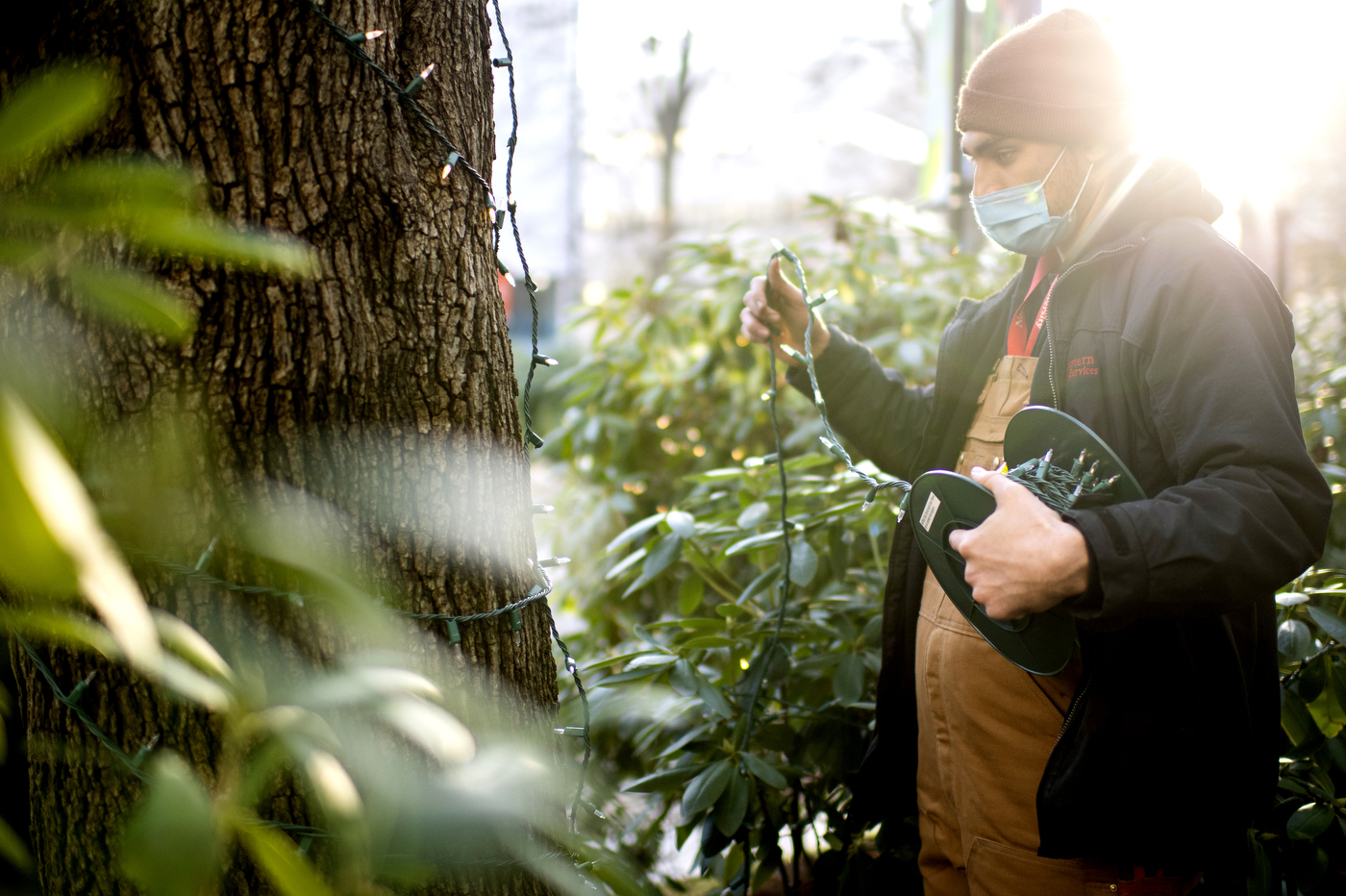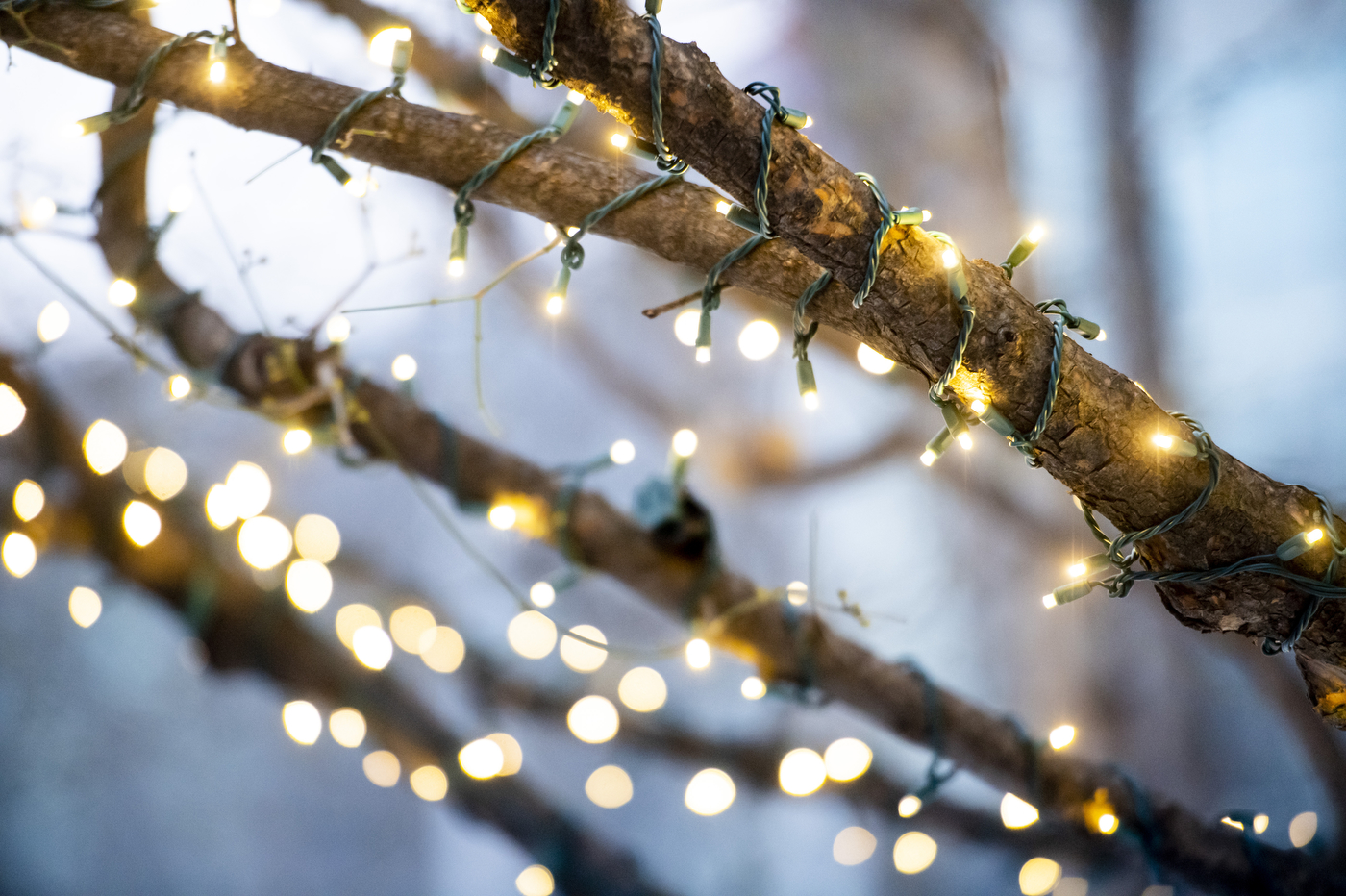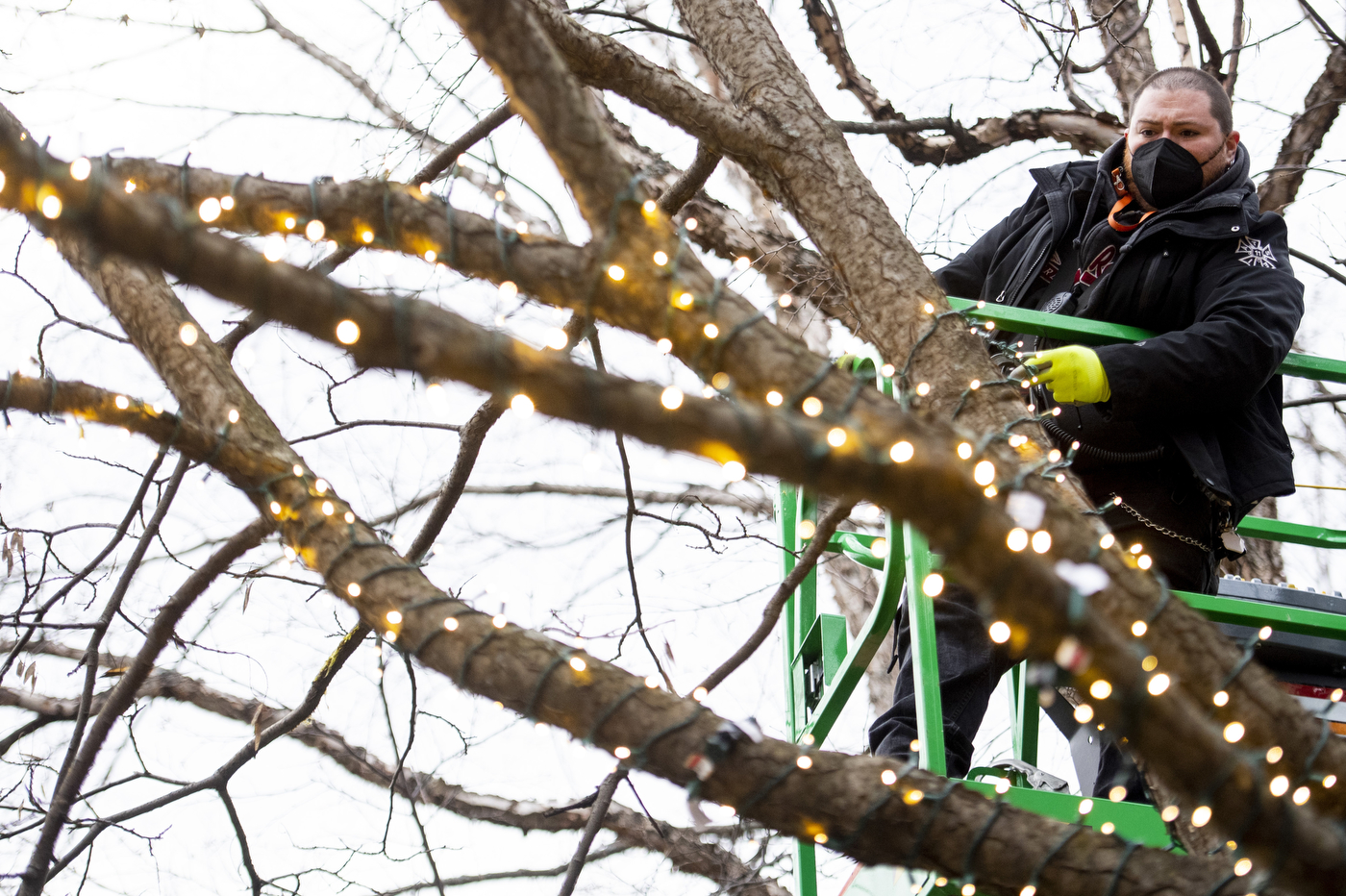by Peter Ramjug
News@Northeastern
And at last I see the light.
With all due respect to America’s Got Talent star Jackie Evancho’s goosebump-inducing version of “I See the Light,” we may all be belting out our own rendition of her mega-hit when work is completed this week on illuminating nearly 50 trees around Northeastern’s Boston campus, including seven on Centennial Common, bringing brightness to the vast expanse of campus greenery.
Now if only the squirrels would stop gnawing through the wires.
 |
 |
 |
 |
Members of the Landscape Services department at Northeastern, install holiday lights on trees and bushes around Snell Quad. Photos by Matthew Modoono/Northeastern University
The section of West Village between the Ruggles train station and the visitor’s center near the John D. O’Bryant African American Institute will shine brightly from dusk to dawn, complementing the fire pits and adorned dining tents as outdoor destination spots while distancing continues indoors, says Matt Albanese, the Centennial lighting project manager.
“Slow and meticulous” is how he described the painstaking process of wrapping lights around the tree trunks, each wrap measured precisely three inches apart with the help of a ruler, all the way up and out to the branches. Work crews on lifts are careful not to damage the branches.
“The last thing we want to do is harm the tree,” Albanese says.
Connected end-to-end, the light strings could well surpass 2,000 feet, he adds, enough to dwarf some of the tallest skyscrapers.
Christmas lights on campus are nothing new. They have been installed for years around the sculpture park near Curry Student Center, Snell Library Quad, Krentzman Quad on Huntington Avenue, and the narrow walkway between the Krentzman and Snell quads (sometimes known as Bulfinch Park).
And, of course, there are the illuminated menorah, Nativity scene, and Christmas tree atop Curry’s roof.
But, for the pandemic year, the university wanted to add some sparkle to Centennial that could be accomplished quickly and brighten up one of the university’s main thoroughfares, says Chuck Doughty, program director of landscaping and grounds.
 |
Lights are one way to help shake off the winter blues, officially known as seasonal affective disorder, according to the Mayo Clinic. Light therapy is also used to treat depression, jet lag, and insomnia.
But on a crisp December day with snow blanketing everything, students strolling past Centennial Circle were more in tune with how lights will liven the place up.
“It’ll be brighter and pretty,” says Kaitlyn McLaughlin. The Houston native says she occasionally sits on the adirondack chairs and knows how dark it gets at night, and she frequently passes through the area. “Curry is over there, testing is over there, a lot of stuff is over there,” she says, pointing toward the eastern section of campus.
 |
 |
 |
 |
Hundreds of strings of lights are hung on Centennial Common for the winter season. Photos by Ruby Wallau/Northeastern University
For a pair of students from New York, a shining Centennial is also a good idea. Anthony Cusato, who is studying mechanical engineering, and Matt Dean, a computer science major, say they often cut through the area and think lights would add a nice touch.
“I have seen lights on some of the trees and in my opinion it’s really pretty,” Dean says, “so I would just like to see it just for that reason alone.”
Dean says he is on co-op this semester and hasn’t left his room much, but when he does it’s almost always through the common.
“This is one of the hub spots of campus,” he adds.
 |
 |
 |
 |
Hundreds of strings of lights are hung on Centennial Common for the winter season. Photos by Ruby Wallau/Northeastern University
The location presents a few challenges. There aren’t enough electrical outlets to match the scale of the lighting project, so the university is experimenting with solar-powered light strands. A four-inch by four-inch square pad will be aimed at the sun to draw power, but early-onset darkness and cloudy days could pose an issue.
“If it works, then that will make the power issue that much easier,” Albanese predicts. Maybe, but it won’t do anything to fix another problem—squirrels.
They have eaten through several light strings around campus already, and Doughty suspects that they may be attracted to the soy-based, weatherproof wire insulation. It can be an irresistible treat for squirrels and other hungry creatures.
Either that, or it could be that squirrels just need to constantly gnaw. “I can’t explain why, and the squirrels aren’t talking,” Doughty laughs.
Biting through the strands or the bulbs doesn’t electrocute them, he assures.
 |
 |
 |
 |
Hundreds of strings of lights are hung on Centennial Common for the winter season. Photos by Ruby Wallau/Northeastern University
Northeastern’s grounds crews have become efficient at making repairs with electrical tape and keeping the lights shining brightly. Still, it can’t be easy when they have to comb inch-by-inch to find the chewed-up spot on a long strand.
“We’ll be watching them,” Albanese says, adding that there isn’t much in the way of an environmentally friendly repellent on the market that can be spread on the lights to deter the squirrels.
“We just have to hope for the best,” he laughs.
Written by , News@Northeastern
